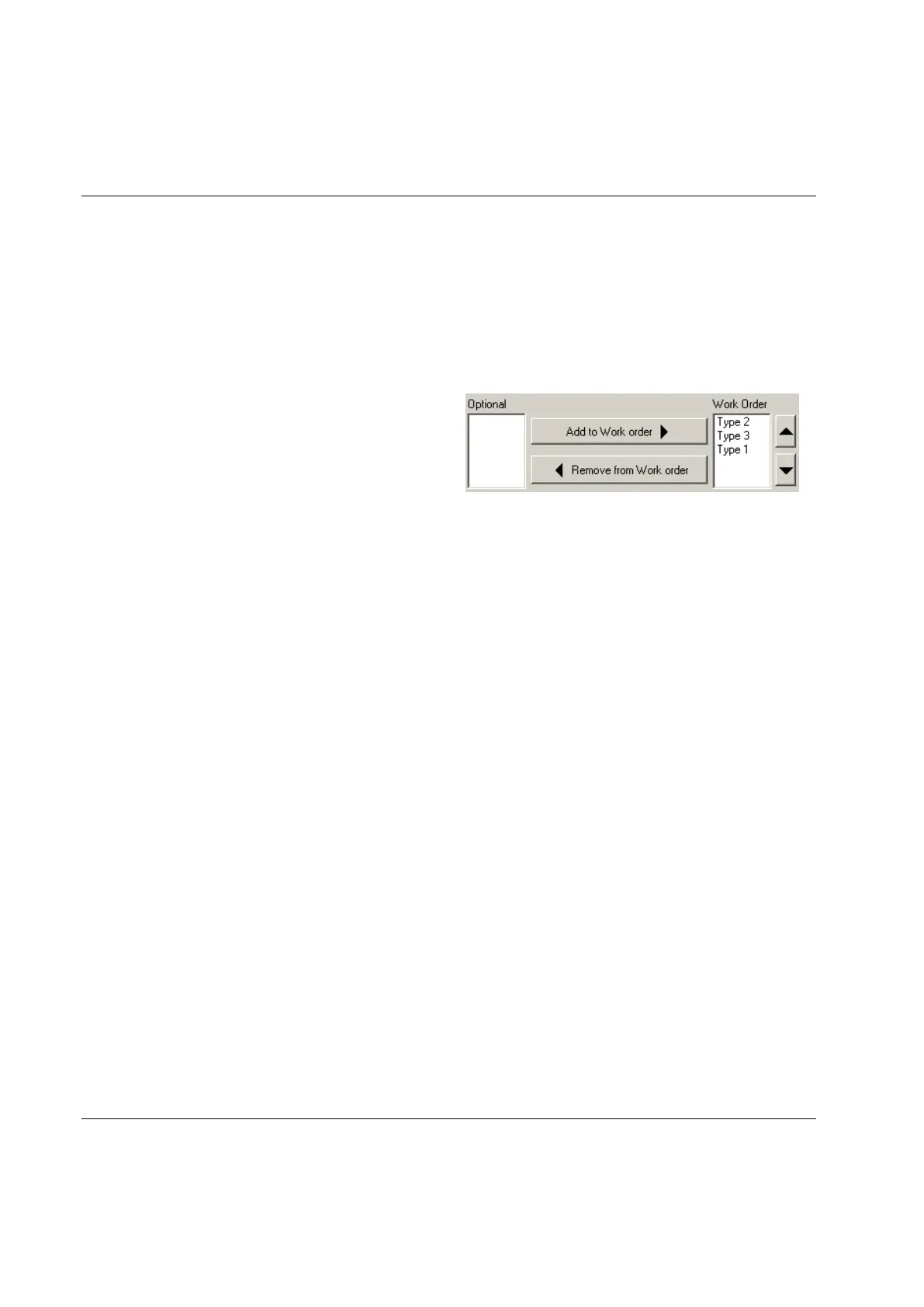Identifier
190 (428) 9836 3123 01
The Result part is additional information stored together with each tightening result in the Power Focus
database. This information can come from one or more of the defined identifier types independently.
Multiple identifiers provide storage of up to four result parts (RBU-dependent) after memory
reconfiguration. The additional information from the result parts is displayed in the Identifier monitor, and
the result of the tightening is displayed in the Result Monitor.
The result part additional information is stored with the tightening result in the Power Focus database.
Example:
An airbag is mounted in a car.
Type 1 represents the airbag which can be of different
variants that need different Psets. Type 2 represents
the car (VIN) and Type 3 identifies the work station.
A work order is configured where Type 2 (VIN) and
Type 3 (work station) have to be scanned before Type
1 (airbag).
Each tightening result from the Psets listed under Type 1 is stored with the VIN, the airbag ID, and the
work station ID.
The Identifier monitor shows the Work order and the Result monitor shows the tightening result. The
tightening result with all the additional information can be retrieved via command Get all results or via
Tools Net.
Part Id scan: This concept offers the opportunity to scan a variant of a part and select a specific Pset in
the Job. (The job itself may have been selected by another identifier). The significant numbers and part
id identifier length do not necessarily have to have a full match to select a specific Pset. This is achieved
by means of wildcards.
14.2 Identifier prerequisites and details
Prerequisites for significant strings:
400 significant strings can be set for Type 1
A string can only be added once in Type 1
A Pset, Multistage or Job ID can be added to any string of Type 1
Wildcards can be used in Type 1 strings if the significant positions are different and outside the length
of some Type 1 strings
